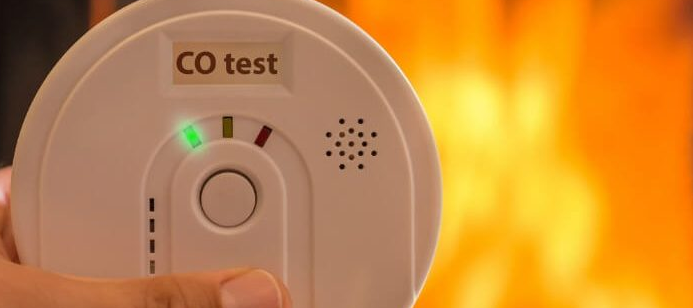

It’s heating season, don’t “just” depend on CO detectors. Is your furnace safe?
I started inspecting homes in WI over 25 years ago.
For years I checked every furnace for Carbon Monoxide even though testing for Carbon Monoxide (CO) is beyond the scope of a Home Inspection in WI. I’ve always tried to offer our customers more than just the minimum.
Unfortunately, there had often been a perception in the real estate community that if the CO reading was low, the furnace was safe.
That’s not true.
Safety is not just an instant in time, it’s a risk issue. And the risk grows greater as the furnace grows older. A relatively new furnace can have high CO readings in the flue gases and the risk of CO exposure may be relatively insignificant.
A 20 year old furnace may have low levels of CO if the burners were recently tuned up and burning clean, but the risk of a cracked heat exchanger and exposure is much more significant on a furnace that is near or past the end of its design life.
When I went through training with Focus on Energy and the Building Performance Institute in the 90s, I learned that different organizations had different protocol for testing and different criteria for acceptable levels of CO.
Now when I inspect a furnace, I place more of an emphasis on issues such as signs of leaks at the plenum, corrosion in the furnace cabinet, scorching & pitting on the metal in and around the heat exchanger, roll out from burners in older units, standing water in the furnace cabinet and ultimately whether or not the unit is at the end of its design life.
Planned obsolescence is real.
I look for reasonable signs of concerns that prompt me to advise Further Evaluation by a Qualified Specialist. These signs tell us something is not right. When we deal with the consequences of Carbon Monoxide exposure, I advise my customers of the danger and that it is in their best interest to have a specialist evaluate the system for issues beyond the scope of the home inspection.
I’ve often heard the comment: “You are the expert”.
Home inspectors are more like General Practitioners than Experts or Specialists. It’s often easy to determine if a condition is acceptable or not. I’m writing about the gray areas. We need to understand the limitations of a home inspection. We need to be aware of signs that “may” indicate a more significant concern, and that confirmation of these conditions is beyond the scope of a home inspector. We need to know when it’s reasonable to request Further Evaluation by a Qualified Specialist.
I will never forget an email I received from an attorney 4 days after I inspected his home. During the inspection, I noticed some staining above the furnace below the condensate line from the A/C unit. I reported that this condition could mean something significant if the moisture had been dripping on the heat exchanger and caused a crack which could lead to hazardous Carbon Monoxide entering the home.
He informed me that he took my advice, hired a heating contractor for Further Evaluation and discovered the furnace e indeed had a cracked heat exchanger. He thanked me for saving him $3,500.00. Had I only suggested a service call after occupancy, it may not have just been the cost of a new furnace, but the potential consequences of exposure to the hazardous CO gas.
It’s important to understand that if a furnace has been recently tuned up, the burners may be burning clean and there could be no significant CO readings if tested. Depending on where a crack is located, bottom, back, seam of a heat exchanger, the CO readings “may” be negligible at the time of testing, but that crack will grow and so will the risk of CO exposure.
The point I’m trying to make is that we should not depend solely on a CO test to determine if a furnace is safe.
An analogy would be a basement that has recently flooded. If you test for mold the same day as the flooding, your results may be negative. The spores may not have had a chance to grow to a detectable level.
A crack in a heat exchanger will get larger as time goes on; it will put you and your family at a greater risk of exposure to hazardous Carbon Monoxide.
I hope this helps.
Be safe.
Donn Anderson
Anderson Home Inspection
Certified Master Inspector – Since 1995
Article on Google MyBusiness also: https://posts.gle/kD1s1


